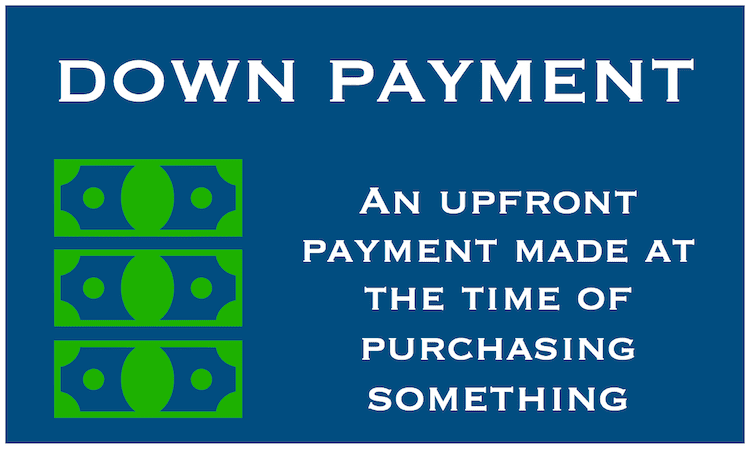A down payment is an upfront payment made at the time of purchasing something (typically a big ticket item).
In the UK and Ireland a down payment is also known as a deposit.
It is a portion of the full purchase price paid for out-of-pocket (as opposed to borrowing), with the remaining balance to be paid over a certain period via regular installment payments.
Down payments are often part of a loan, such as a mortgage when buying a home. The borrower is responsible for making the down payment. The larger the down payment is, the smaller the loan is.
The ability to make a down payment shows a lender that the borrower can raise a certain amount of money for long-term investment – an indication that their finances are sound.

The advantages of a large down payment include:
- Higher chance of qualifying for lower rates
- Lower monthly payment
- Potential equity to draw from
The advantages of a small down payment include:
- Not having to wait as long to build up more savings before making the purchase
- More cash on hand for other purposes
Example of a down payment
Alex has saved $50,000 to buy a house. He finds a house on the market he likes going for $250,000 and decides to buy it. Alex goes to his bank and uses his savings of $50,000 to cover a down payment of 20% of the purchase price. He borrows the remaining $200,000 which he can pay off with a 20-year mortgage.
The house is used by Alex’s bank as collateral in order to secure the loan against default (the borrower fails to repay the debt). The loan-to-value (LTV) ratio in the example above is 80%. As far as the lender is concerned, the greater the LTR ratio, the higher the risk.
